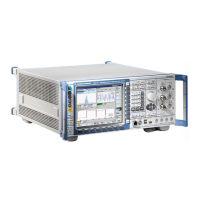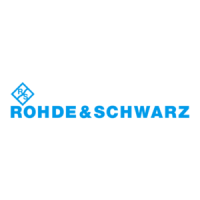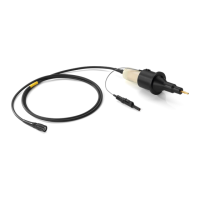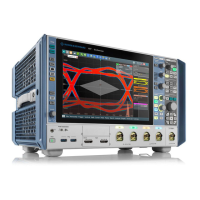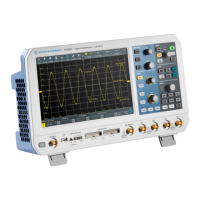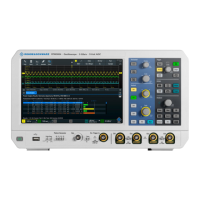CMU Measurement Control
1100.4903.12 5.35 E-8
Retrieving Measurement Results
General command
structure
The results of a measurement can be retrieved by means of the FETCh, SAM-
Ple or READ query. All three commands have the same structure:
FETCh<type>:<meas_obj>[:RESult]<spec>?
SAMPle<type>:<meas_obj>[:RESult]<spec>?
READ<type>:<meas_obj>[:RESult]<spec>?
The literals written in angle brackets have the following meaning:
<type> Measurement trace (:ARRay), scalar values
([:SCALar]) can be retrieved in the network tests; see the
relevant operating manuals.
To limit the number of commands and simplify the program
syntax, all scalar results determined in a measurement are
generally read out with a single command. They are returned
as a list of values separated by commas.
The length of the arrays depends on the measurement group
and possibly on the configuration settings; see also Subar-
rays paragraph below.
<meas_obj> Measurement group (measurement object): POWer | SPEC-
trum are used in RF Non Signalling mode.
<spec> [:CURRent] current evaluation period, other statistical
traces can be retrieved in the network tests.
Subarrays
Arrays generally consist of a large number of values representing the measure-
ment trace over the whole time or frequency range. With the SUBarrays com-
mands, the CMU provides a flexible tool for handling large amounts of data.
These commands restrict a measurement to up to 32 subranges where either all
measurement results or a single statistical value can be read out.
Subarray
configuration
The subarrays are configured with the following commands:
CONFigure:SUBarrays:<meas_obj> <Mode>, <Start>, <Samples>
{,<Start>, <Samples>}
<meas_obj> Measurement group (measurement object). For examples
refer to the manuals for the network tests.
<Mode> Statistics mode for all subranges. The following parameters
can be set:
ALL Return all measurement values (the number
of values in every subrange is given by the
<Samples> parameter).
ARIThmetical Return the arithmetical mean value of
the results in every subrange.
MINimum Return the minimum of the results in every
subrange.
MAXimum Return the maximum of the results in every
subrange.
IVAL Return a single measurement value
corresponding to the abscissa value <Start>.
If <Start> is located between two test points
with valid results then the result is calculated
from the results at these two adjacent test
points by linear interpolation. Ignore the
<Samples> parameter.
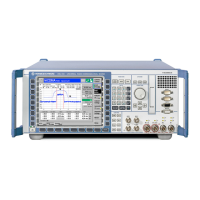
